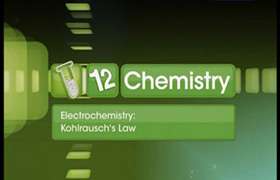CBSE Class 12-science Answered
A formal charge (FC) is a partial charge on an atom in a molecule assigned by assuming that electrons in a chemical bond are shared equally between atoms, regardless of relative electronegativity or in another definition the charge remaining on an atom when all ligands are removed homolytically .
The formal charge of any atom in a molec le can be calculated by the following equation: FC = number of valence electrons of the atom in isolation - lone pair electrons on this atom in the molecule - half the total number of electrons participating in covalent bonds with this atom in the molecule.
When determining the correct Lewis structure (or predominant resonance structure) for a molecule, the structure is chosen such that the formal charge on each of the atoms is minimized.
Examples:
- carbon in methane: FC = 4 - 0 - 8/2 = 0
- Nitrogen in the nitro group NO2-: FC = 5 - 2 - 6/2 = 0
- double bonded oxygen in NO2-: FC = 6 - 4 - 4/2 = 0
- single bonded oxygen in NO2- FC = 6 - 6 - 2/2 = -1







